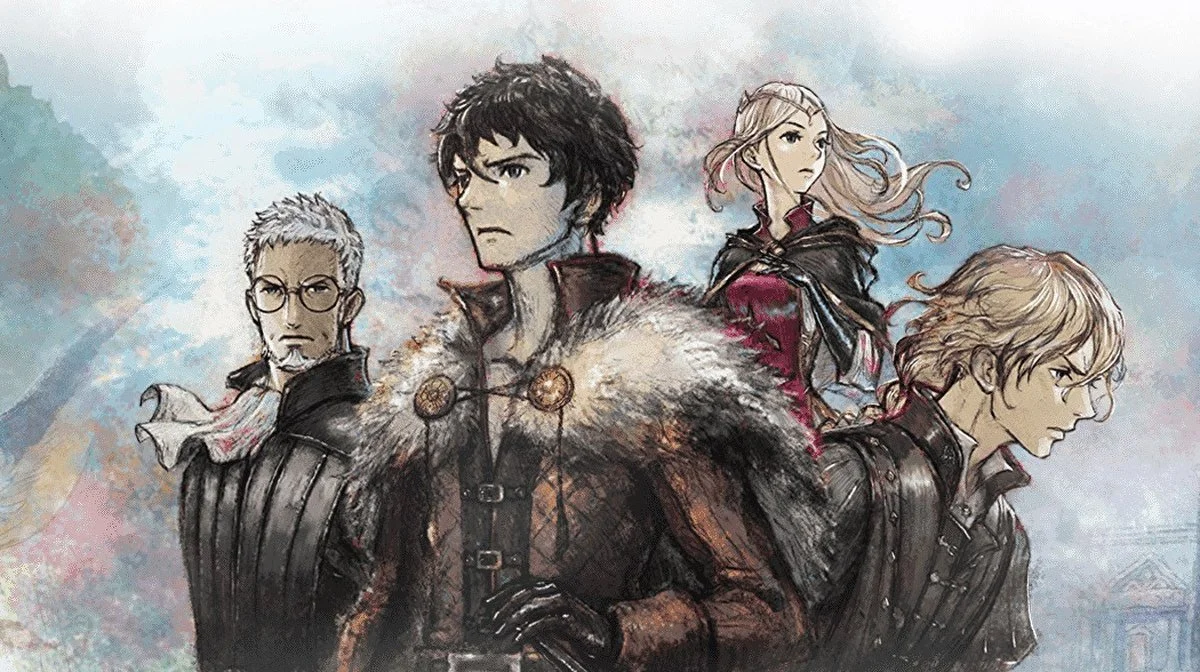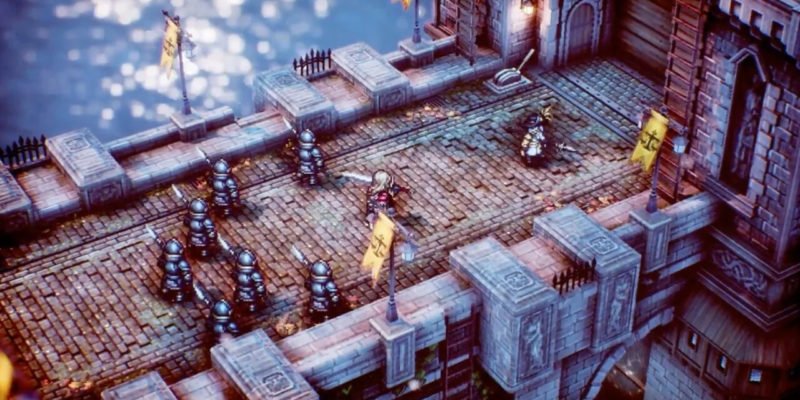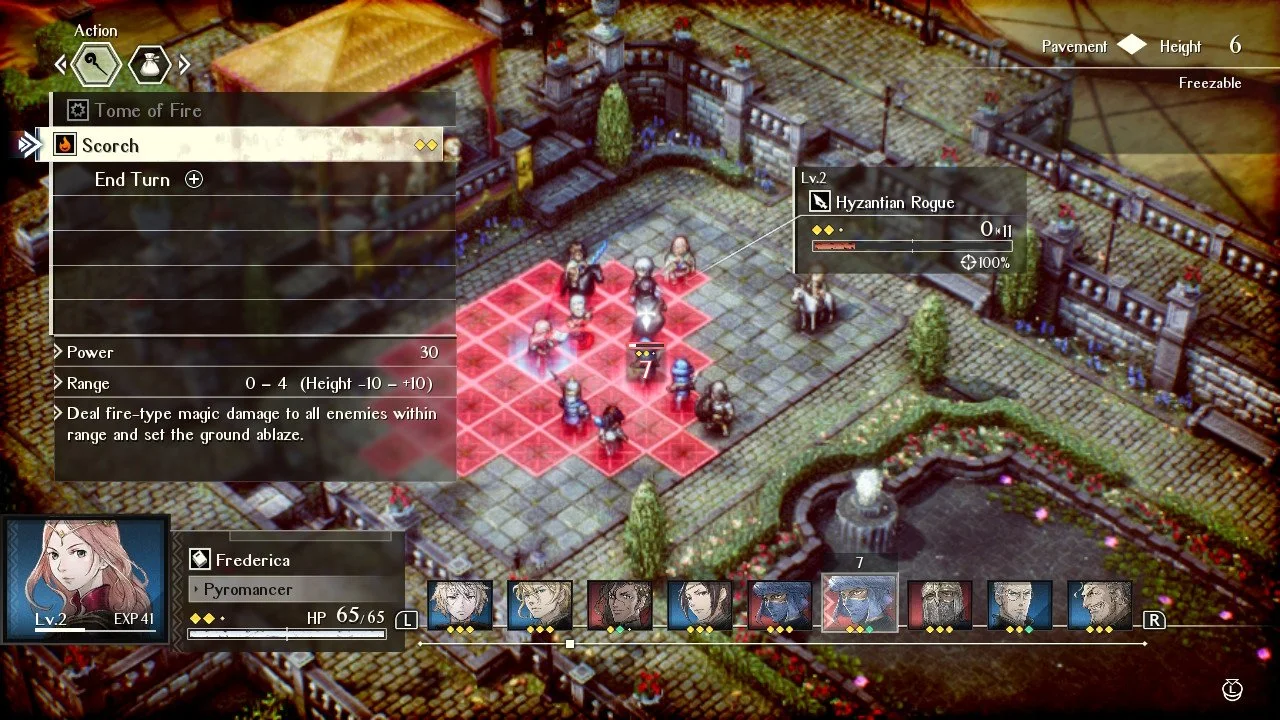Author: Rich Meister
In a year of slow starts, Triangle Strategy is one of the slowest games I’ve played in a long time. In the first two hours or so, you do almost nothing. You’re introduced to protagonist Serenoa Wolffort, his many subjects, and mystical bride-to-be. At a glance, the combat is clearly inspired by Final Fantasy Tactics, and one of the best JRPGs of all time is quite the pedigree to live up to.
Triangle Strategy ( Nintendo Switch)
Developer: Square Enix, Artdink
Publisher: Nintendo
Released: March 4, 2022
MSRP: $59.99
Triangle Strategy is set on the continent of Norzelia, a realm where three major factions vie for control of salt and iron (riveting stuff) in a world where people can shoot fireballs from their hands; it's weird to see politicians scheming over salt mines, but while dull at times the grounded political intrigue works. Early hours take a long time introducing you to the state of this continent and the uneasy alliance between nations over these significant resources. Naturally, this all goes to hell pretty fast, and Serenoa and company struggle to stay alive and reclaim their kingdom.
It’s almost remarkable that having come out the other end; I would consider Triangle Strategy’s story captivating because it is despite everything working against it. For example, the main characters are all about as interesting as the mounds of salt they’re fighting over. Serenoa Wolffort, his childhood friend Prince Roland, and his betrothed Frederica all have interesting backgrounds and motivations, but they emote about as much as a piece of cardboard. Nobody in this game seems ever to lose their cool, and they discuss their imminent destruction as if they're trying to decide what to do for dinner. I guess all these lords and ladies should be used to keeping their emotions in check, but I would’ve appreciated just a little yelling occasionally.
To play more to Triangle Strategy’s strengths, we should talk about the Scales of Conviction. Every time a major crossroads is reached, instead of simply having the player choose what to do, the seven plot essential characters are all asked to vote on your next move. Serenoa is given a chance to speak with his friends and attempt to sway their choices. Still, your team's decision will stand even if you disagree with it, and depending on what dialogue options you have access to, it might not be possible to convince everyone.
Most segments involving the scales have a bride exploration phase where you can chat with people in town and gather information to help swap your companions but depending on the way you’ve been playing the game some people will be impossible to sway.
The greater Conviction system is left somewhat mysterious during your first playthrough. Still, it not only affects unlocking certain dialogue options but what side characters you’ll recruit and what flashback scenes you can view at camp. Serenoa’s Conviction is shaped by the choices you make and the actions you take in battle. I’d recommend just sitting back and seeing where the game takes you for your first run.
Combat is deceptively deep, and the lack of random battles speaks to just how intricately every fight is designed. At the same time, you visit a handful of the same maps multiple times; they never cease to surprise and present unique encounters. It takes a bit of time, but unique means of moving about the map and destructible environments are used to significant effect to make insurmountable seeming odds some of the best combat encounters in the game. I don’t want to spoil anything here, so I won’t get into specifics, but some late-game combat encounters get inventive with map traversal.
Instead of a job system, every character in Triangle Strategy has a set role that can be upgraded and expanded on through a promotion system. Likewise, weapons are upgraded as you progress instead of constantly swapping out gear. You can earn your way to promotions faster by participating in mental mock battles at your encampment, but you won’t find any random fodder battles here. Every encounter is meticulously crafted in Triangle Strategy, and while I found myself craving more combat, random encounters would not be the solution.
Visually, Triangle Strategy is like candy for the eyes. The 2D on 3D art makes the characters really pop on the impressive 3D backgrounds and draws an obvious comparison to Octopath Traveler. This style is really Tomoya Asano’s trademark and it looks stunning in both TV and handheld mode. Lighting is used to amazing effects to make some of the most gorgeous cityscapes and dimly lit halls you’ll ever see.
Verdict: Though it stumbles in places, Triangle Strategy's slow start gives way to a grounded story of political intrigue and some of the best tactical combat this genre has ever seen. It takes some time to sink its hooks in, but it's a confident game that succeeds even through the less desirable aspects like slow pacing. It also rewards replay by pulling back the current on some of the more intricate systems in your second go-around allowing the player to strategically see all they missed on their first go.
Buy it
[This review is based on a retail build of the game purchased by the reviewer]




